#Six Rivers National Forest
Explore tagged Tumblr posts
Text

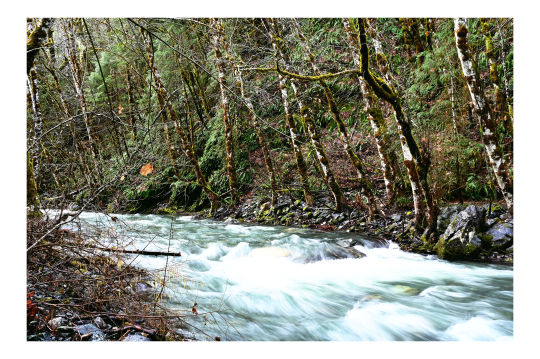


East Fork Willow Creek, yesterday morning. It recently was at flood stage and pulled down part of the road.
Six Rivers National Forest, California
#six rivers national forest#winter#atmospheric river#creek#water#floods#power of water#naturecore#nature#winter storms#forest#alders#maples#forest floor#silky water#northern california#norcal#public lands#landscape photoset#landscape photography#original photographers#nikon photography#nikon#nikon z6#24mm-120mm#long exposure
50 notes
·
View notes
Text

9/29/2024
6 notes
·
View notes
Text
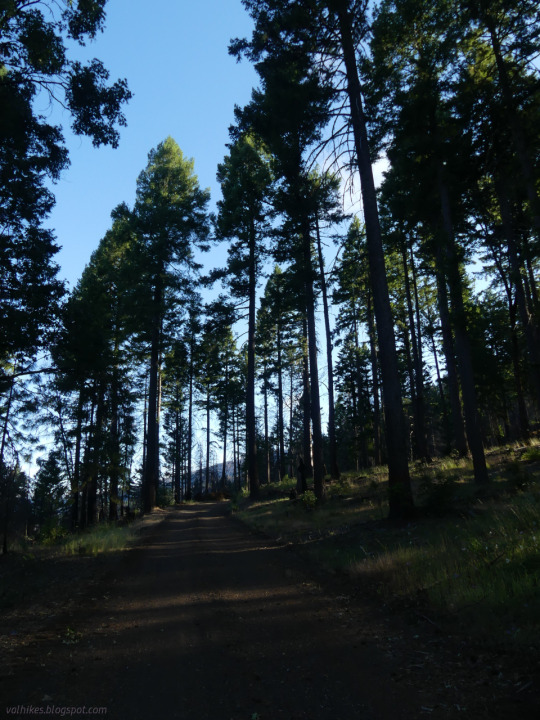

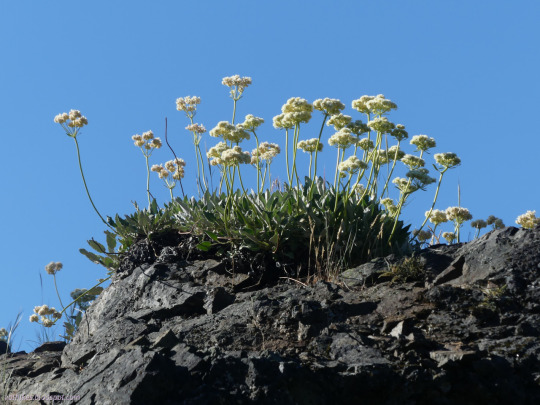
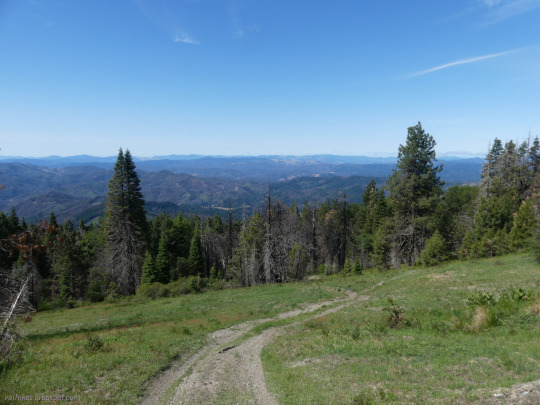
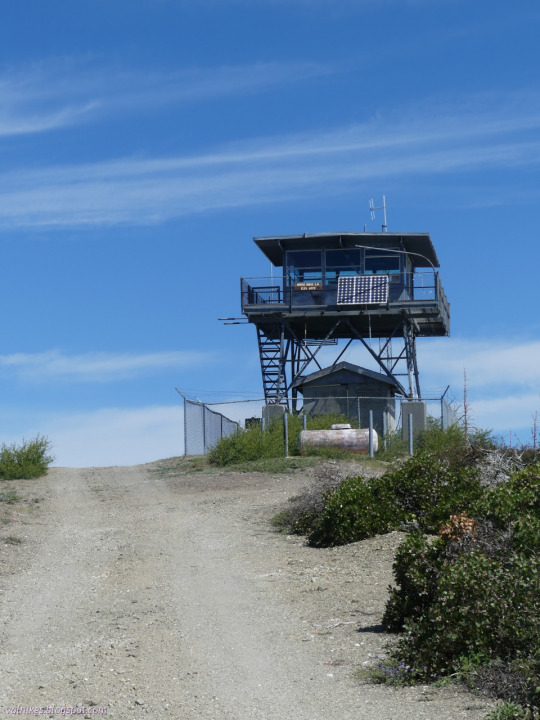
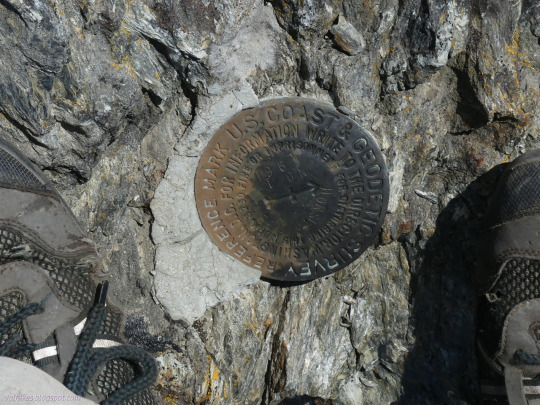
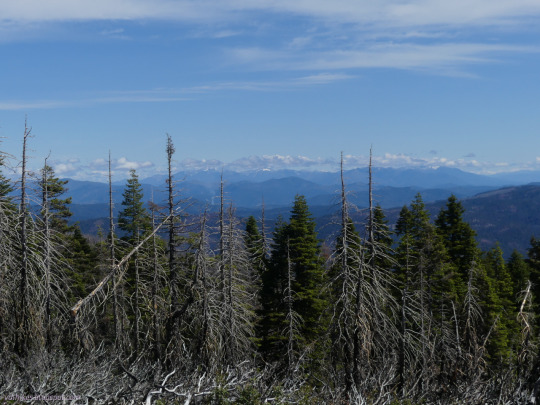




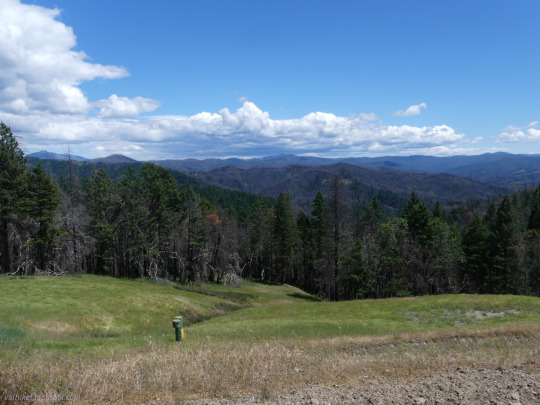

Six Rivers National Forest, California
Visiting the 4th, highest, and only still active fire lookout on South Fork Mountain. That makes all of them!
#hiking#dayhike#peakbagging#SixRiversNF#firelookout#Trinity County#California#landscape#nature#outside#ShastaTrinityNF#TrinityNF#travel#hike#day hike#mountains#Six Rivers National Forest#Trinity National Forest#Shasta-Trinity National Forest#wildlife#wildflowers#flowers#views#peakbagger
55 notes
·
View notes
Text
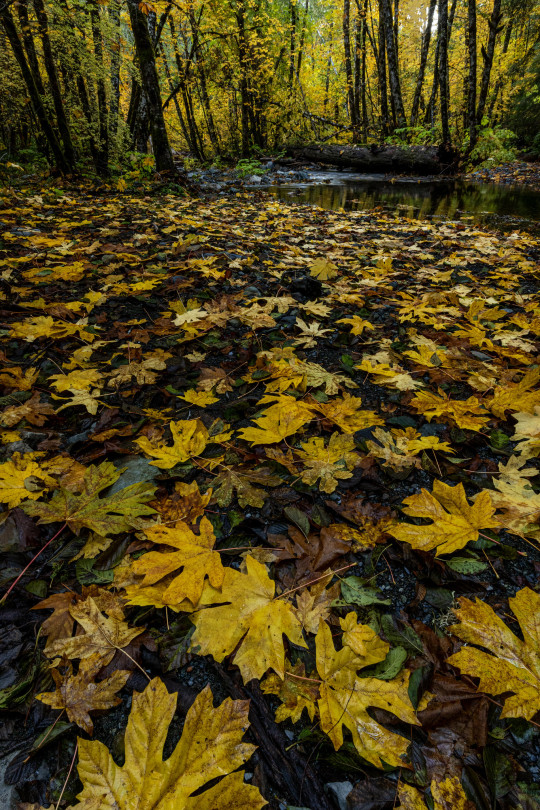
Six Rivers National Forest, CA Martin Swett
#autumn#fall#nature#landscape#forest#california#six rivers#national forest#leaves#leaf peeping#autumn blog#fall blog#river#creek#Northern California#bigleaf maple
48 notes
·
View notes
Text
"[There is] fantastic news for species conservation after new populations of the gorgeous ‘Skywalker’ gibbon, known to science for only 6 years, were recently found living in the politically chaotic nation of Myanmar.
Also called the hoolock gibbon, this dainty vocalist was first described in 2017 living in the extreme south of China on a mountain in Yunnan. Classified as Endangered by the IUCN, the population was estimated to number a paltry 150 individuals, but others were believed to live in Myanmar.
Even before the recent military junta usurped the president and plunged the country into civil war, Myanmar [was a difficult place to conduct field studies, especially extensive or ongoing ones, due to ongoing conflict.]
[Although they are] now in open revolt against the military junta, [the Myanmar states of Shan and Kachin] were nevertheless destinations for an intrepid team of scientists from the Nature Conservation Society Myanmar, Fauna & Flora International–Myanmar Programme, the IUCN’s ape specialist group, and field researchers from universities in England, China, and the US.
Together, they conducted acoustic surveys, collected non-invasive DNA sampling, and took photographs for morphological identification at six sites in Kachin State and three sites in Shan State. With the help of the Myanmar conservationists, the team also interviewed locals dwelling in rural forested areas, small conservation programs, and timber companies about the frequency of sightings and the hunting pressure.
Population estimates of unknown quality and scientific rigor conducted in 2013 suggested there might be 65,000 hoolock gibbons in Myanmar, but the matter became much more complicated after the classification of the Skywalker gibbon as a separate species from the eastern hoolock gibbon—where before they were confused as the same.
“We were able to genetically identify 44 new groups of Skywalker gibbons in Myanmar,” said senior author Tierra Smiley Evans, research faculty at the UC Davis School of Veterinary Medicine, and contributing author. “This is a huge resource and success story for Myanmar.”
These gibbons sing to each other at dawn for around 22 minutes, and consume 36 different plant species; choosing fruit first, and flowers later. They seldom sleep in the same tree two nights in a row to avoid predation, and can’t swim so are often confined to territories by river systems.
The team that discovered them in China in 2017 loved Star Wars, and called them tianxing which is Chinese pinyin for “heaven movement;” a nod not only to their favorite sci-fi franchise, but also to China’s ancient history. In the famous Book of Change [aka the I Ching] of the Zhou Dynasty [1046 BCE to 265 BCE], a divination poem refers to gibbons specifically, and uses tianxing as a verb to describe their movements.
The interviews were a source of great data for the scientists. For starters, nearly all individuals in both the Kachin and Shan states could identify a Skywalker gibbon by sight and by playback of its singing, lending the exercise a good degree of reliability...
“Biologists did not believe Skywalker gibbons could live in the small remaining patches in Southern Shan State before we started this project,” Pyae Phyo Aung, executive director of Nature Conservation Society Myanmar, told the UC Davis press.
“I am delighted with our field team members who have done an excellent job, within a short period of time, building community trust for further conservation actions. This area is degraded forest. It is really important for Myanmar and China to consider extending conservation approaches for the Skywalker gibbon to this new geographic area.”
Nearly 32,000 square kilometers, or around 8 million acres of forestland in Eastern Myanmar are suitable gibbon habitat, and while existing forest reserves like Paung Taung and Mae Nei Laung are quite large, they remain unprotected. For this reason, the survey team recommended they remain considered ‘Endangered’ on the IUCN Red List until habitat protections improve."
-via Good News Network, February 21, 2024
#gibbon#apes#primates#myanmar#endangered species#china#zoology#conservation biology#conservation news#primatology#good news#hope
178 notes
·
View notes
Text
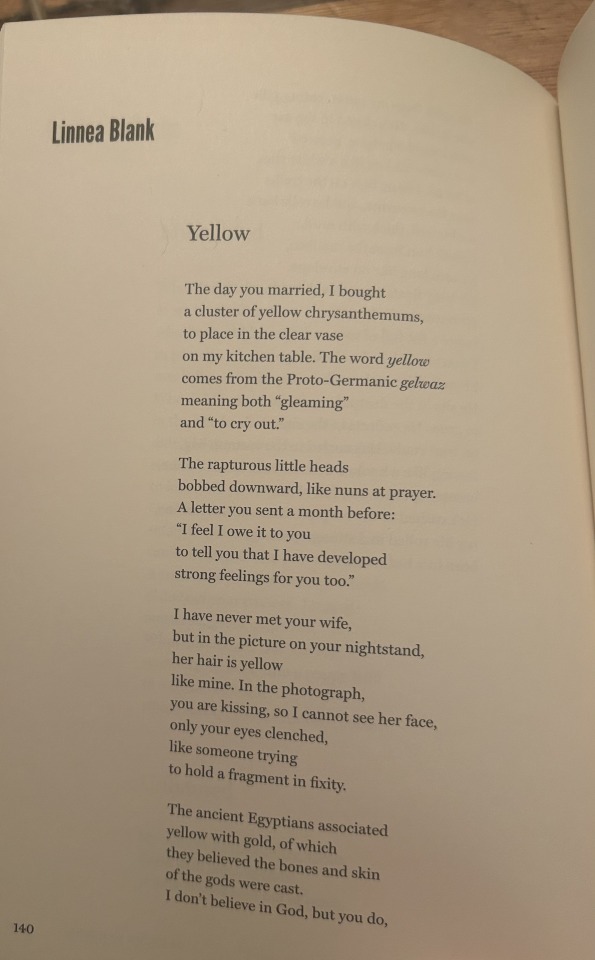
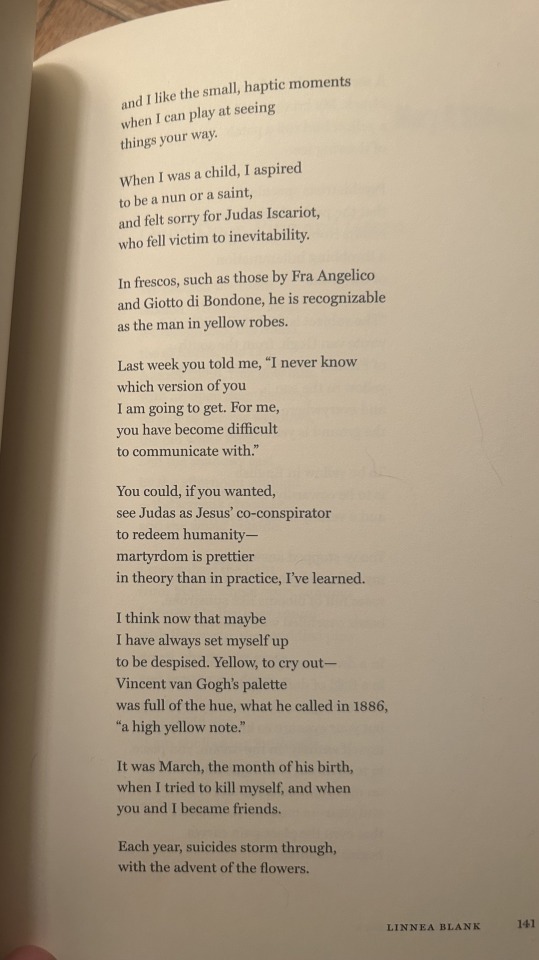
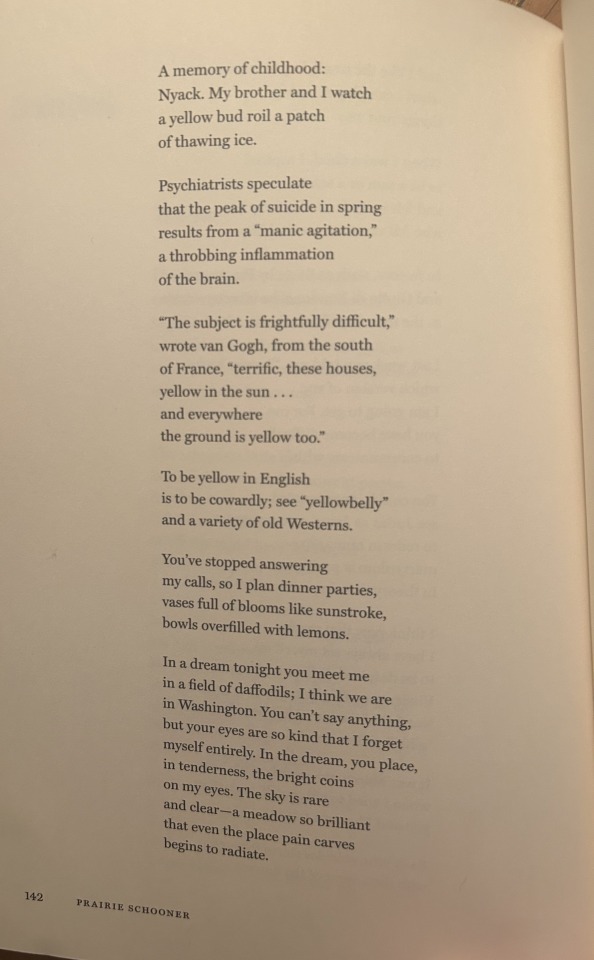
I don't submit many poems for publication, but I am truly delighted that this old piece found a home in a beautiful volume of Prairie Schooner. I wrote this in April 2016, when I was re-emerging from the most deadening period of my life. As much as this poem, on the surface, is about heartbreak, it is much more about the gift of opening myself once again to communion with others and communion with the mystery of our fragile, interconnected world. The person I wrote this for took me by the hand and--with gentleness and understanding--helped me put aside weariness and remember that the world was a place that could still surprise me with a beauty that surpasses explanation, that cannot be neatly explained and shut away. Though it's been years since we have spoken, I am forever grateful for him.
And, as spring quickens in New York City, I am grateful once more to reflect on all I would have missed if I had not made it through the gauntlet of 2015. I would never have met my cat (and love of my life) Willa who wakes me each morning by wildly purring, head butting me like a baby goat, and nibbling my cheeks and nose because she’s just so happy to see me; hiked on Orcas Island with Michael and found a surprise lake which we named Lake Ineffable (because no name was beautiful enough for it) where we stripped off our clothes and swam and embraced each other, blissfully alone and dazed by superfluous beauty; found out that George Washington National Forest may have more fireflies than anywhere in the world; grown into my vocation as a social worker and been blessed to sit in communion with my clients for eight years; built a beautiful relationship with my parents based on mutual respect, affinity, and humor; seen my friends’ babies discover the world; slept beneath a meteor shower sky on a NYC beach in the arms of a man I was suddenly and entirely falling in love with; discovered Eric Rohmer; discovered Wim Wenders; moved to Laramie, Wyoming where everything looks like the abandoned set of a Western film where the paint has flaked off but he extras are still wandering around despondently; moved to Montana where I remembered that I am part of the whole, not just a body in passing; woke in Missoula to the cold air seeping through my window—still half in a dream of Oregon in October—and stirred, deliciously alert beside the boy I loved, craning toward his sleepy, freckled back, to clutch him closer, the brisk quickening of fall making my body a new thing—wild and tender and alive; swam naked in the ocean; had the chance to work with my best friends and fall even more in love with the people they are based off the kindness they showed our clients; had my best friends, in turn, respect and love me more based of what they saw me showing clients; sat by a lake at night and felt an earthquake swell like a heartbeat beneath my body; drove from Missoula to Washington, Ryan’s van weaving through a forest fire zone until we reached the pure, amnesiac sweep of the Pacific; discovered Simone Weil; been, not only forgiven, but embraced by the person I most wronged after six years of estrangement; made up a silly-serious shared mythology with Steven about a vulture God named Hamm who watches over us with a severe equanimity; backpacked through Olympic National Park with Michael and seen and been seen by the strange shaggy haired deer and rabbits who looked at us without fear; discovered Agnes Martin; read poetry with my sage & strange Mara; discovered Olivier Messiaen; discovered Mary Ruefle; discovered Ana Mendieta; realized that I like the color yellow; moved to New York City; discovered Carol Rama; learned how to enjoy dancing to music other than punk rock; seen a moose in the wild; spent a summer in that yellow shotgun house with the overgrown yard and the porch overlooking the river where we made dinner each night listening to recordings of bird calls; experienced the delights of solitary sunbathing on Brooklyn roofs; encountered places named Hellgate, Bitterroot, and Rattlesnake; recited The Love Song of J. Alfred Prufrock at 3 AM, wading in the waters of the Long Island Sound; realized I am capable of keeping houseplants alive; heard the thrumming ecstasy of the grouse's wings; learned the name of those clustered, mustard-colored flowers that grow on the Oregon coast; grew grateful for beauty again, remembering the world is not a place I can neatly explain, cannot fold in linen and shut in a drawer; and, most of all, remembered the daily ways we concede—plainly, without theatrics—to live.
Today I am thankful for those who love me and those who allow me to love them.
#poetry#suicide#gratitude#love#love poems#vincent van gogh#my writing#prairie schooner#personal#text#yellow#but all love is uneven
82 notes
·
View notes
Text
Excerpt from this press release from the U.S. Fish and Wildlife Service:
Today, the U.S. Fish and Wildlife Service announced more than $17 million in funding through the Delaware Watershed Conservation Fund, in partnership with the National Fish and Wildlife Foundation, for 45 conservation projects in the Delaware River watershed. The grants will generate nearly $20.7 million in matching contributions from the grantees, providing a total conservation impact of $38 million.
Funding includes more than $4.7 million from President Biden’s Bipartisan Infrastructure Law for six projects aimed at improving public access, recreational opportunities, and water quality, as well as enhancing shoreline resiliency and critical habitat.
The Delaware River watershed spans parts of Delaware, Pennsylvania, New Jersey and New York — a landscape that encompasses one of the most densely populated urban areas in the nation yet remains 50 percent forested. Four hundred miles of the Delaware River are classified as National Wild and Scenic River, indicating their shorelines remain largely undeveloped but accessible in places by roads. These projects supported by the Delaware Watershed Conservation Fund will benefit the millions of people who rely on the Delaware River and its tributaries by improving habitats, reducing flood risks, improving water quality, and increasing access to natural places.
Multistate: $94,069 for building capacity for dam removals in the Delaware River watershed through trainings and workshops.
Delaware: $500,000 for re-envisioning Rodney Reservoir Park with restored natural spaces to enhance water quality, wildlife habitat and recreation.
New York: $779,306 for reconnecting rivers in the upper Delaware River watershed to enhance brook trout habitat and mitigating flooding.
Pennsylvania: $1.5 million for restoring habitat and increasing equitable access to nature at Franklin Delano Roosevelt Park.
Pennsylvania: $830,400 for improving public safety, access and water quality at Stroud Preserve.
Pennsylvania: $1 million for implementing green stormwater infrastructure projects at four under-served elementary schools in Philadelphia.
The total funding also includes $347,450 from the USDA’s Natural Resources Conservation Service for projects such as collaborative forest management in New York and Pennsylvania. This project, co-funded between the Service and USDA-NRCS, is part of a new federal partnership to support conservation efforts on working lands.
20 notes
·
View notes
Text
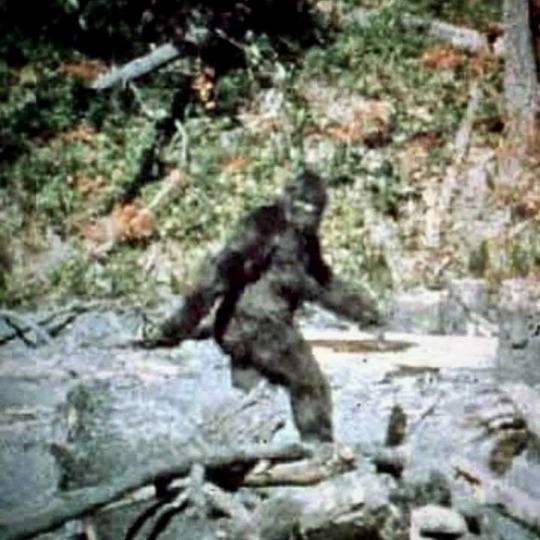
On this day:
THE PATTERSON-GIMLIN FILM
On October 20, 1967, Roger Patterson and Bob Gimlin rode their horses along the partially dried Bluff Creek in Northern California, examining the ground as they went. The two men were in search of tracks that would prove the existence of sasquatch. On this day, they rounded a substantial stack of timber that had tumbled together and inadvertently surprised a large hairy creature crouched by a stream. Both horses reared in fright, tossing their riders. Patterson quickly recovered and grabbed his hand-held 16-mm cinecamera. The sasquatch stood and, arms swinging, walked calmly, but quickly into the forest. Patterson ran after the creature.
Gimlin followed at a safe distance, gun at the ready, in case his friend should be attacked. At 80 feet from the animal, Patterson stopped running and began to film. Before the creature completely disappeared, Patterson got a clear look at its conical head, dark fur, and large breasts. The fernale sasquatch was about seven feet tall, had a three-foot shoulder span, and a heavy brow ridge over the eyes of an otherwise flat face. Her weight was calculated to be 700 pounds. The two men took photos and made casts of her 14½-by-6-inch footprints.
Shortly after, Canadian taxidermist Bob Titmus followed the tracks and plotted their route, comparing it to the sasquatch's movements in Patterson's film. He discovered that at one point, the creature sat on a hillside, possibly watching Patterson and Gimlin catch their horses. The Six Rivers National Forest had begun to be a known point of Bigfoot activity after road construction opened up the area ten years earlier. Road workers had noticed a variety of large, humanlike footprints, between twelve and seventeen inches long, in the impressionable ground, and when the newspapers carried a story about the prints, the word bigfoot was coined.
Text from: Almanac of the Infamous, the Incredible, and the Ignored by Juanita Rose Violini, published by Weiser Books, 2009
115 notes
·
View notes
Text










Jasper National Park, AB (No. 2)
Jasper National Park's name originates from Jasper Haws, a Maryland-born fur trader who worked for the North West Company. In 1815, Haws took command of a North West Company trading post, built on Brûlé Lake in 1813, which subsequently became known as Jasper's House. In 1830, the trading post was relocated further up the Athabasca River, just north of Jasper Lake. The site of Jasper House itself was designated a national historic site in 1924.
Jasper House was destroyed in 1910, but it gave its name to both the national park, and the town of Jasper within the Park.
Jasper Forest Park was established by a federal order in council on September 14, 1907. The park's establishment was spurred by plans for the construction of a second Canadian transcontinental railway, which was to cross the Rocky Mountains at Yellowhead Pass; Jasper Park was intended to be developed into an alpine resort in the mould of Rocky Mountains Park, with a train station, tourist hotels, and a service town. Collectively, the mountain parks were intended as a sort of wilderness playground for middle-class workers, an antidote to the malaise of modern life. However, the vision of wilderness on which the development plan depended was at odds with the presence of long-established Métis homesteaders within the boundaries of the park, many of whom were descended from the white and Haudenosaunee fur traders and trappers employed by the North West Company and the Hudson's Bay Company in the 19th century. In 1909, six Métis families were declared squatters, paid compensation for improvements made to the land, including buildings, ditches, and fences, and ordered to leave the park.
Source: Wikipedia
#Roche Ronde#Alberta#Rocky Mountains#Northern Rockies#Alberta's Rockies#travel#original photography#vacation#tourist attraction#landmark#landscape#summer 2023#Canada#woods#forest#reflection#flora#nature#countryside#fir#pine#Jasper National Park#Athabasca River#UNESCO World Heritage Site#Yellowhead Highway#Pyramid Mountain
22 notes
·
View notes
Text
Biodiversity COP: Hold-ups and cash shortfalls threaten forests
The first stop on the road from Cali to Belém, the UN conference in Colombia brought wins to Indigenous peoples, but failed to ensure commitments from wealthy countries to protect the environment

Concita Sõpré speaks with calm. She enunciates each syllable of her Portuguese and waits patiently for a translation to English. She is seated on stage at a table in a noisy room where heads of state, representatives from non-governmental organizations, and community leaders from around the world are speaking to the press, hoping to be heard. The cacophony of voices seeping in from outside the room make it hard for those seated furthest away to understand her. But she has plenty to tell these distant ears: “We preserve for those yet to come. For my grandchildren, my great-grandchildren. That is why this forest exists. That is why clean water and animals still exist,” she says. “What part of what we’re saying does the world still not understand?” she asks.
Concita sees firsthand how life’s time is not bureaucratic time. She is in Cali, Colombia, taking part in events at the COP-16, the UN Biodiversity Conference, where leaders from around the globe are discussing how to save the Nature their very societies have destroyed.
Two years ago, at the COP-15 meeting in Canada, the agreement struck by the nations, the Kunming-Montreal Global Biodiversity Framework, was lauded as ambitious. They planned to raise the world’s preserved land area from 17% to 30% and water and sea areas from 10% to 30%. They would additionally restore 30% of already degraded areas. To do this, developed countries would contribute US$ 20 billion a year by 2025.
In 2022, there were eight years left for countries to finalize the plan. Now they have six. At this COP-16 meeting, referred to as the “implementation COP” behind the scenes, they are supposed to show their progress and align on the details for reaching this goal, but there has been hardly any movement. Most of them have yet to introduce even one action plan to reach the targets, as agreed two years earlier. And just 2% of the preservation money owed by developed countries has been guaranteed so far. The COP meeting in Cali did manage to bring in more civic participation – there were a record number of delegations and side events with Indigenous communities, Afro-descendants, and civil society organizations, which ensured bigger gains in the final text. Yet no advances were made on the main issue: guaranteeing money to keep the forest standing. It was a wasted opportunity on the road from Cali to Belém, the pair of conferences in Amazonian countries that will include a Climate COP meeting in Pará in 2025, while also raising major expectations for the forest.
Never has so much life been lost and, according to the Intergovernmental Science-Policy Platform on Biodiversity and Ecosystem Services, a group of over 150 scientists, 75% of the Earth has already changed due to human action. Reducing devastation and letting the forest grow are two fundamental fronts in tackling the climate crisis. The Amazon, Pantanal and Cerrado are on fire. Droughts have made dozens of rivers into deserts. Violent flooding ravaged Porto Alegre months ago. During the COP-16, floods killed over 200 people in Spain.
Continue reading.
#brazil#politics#colombia#environmentalism#environmental justice#indigenous rights#international politics#cop16#brazilian politics#mod nise da silveira#image description in alt
8 notes
·
View notes
Text
A look at the Mantles of Before the Flood: Land
Before the Flood launches in a week! (A fact which I'm very excited about, and not at all nervous about for sure.) Which gives me the perfect amount of time to start talking about the Mantles, the roles players take on in the game.
There are six of them, Land, Legend, Nature, Nation, Weal, and Woe. Each representing a fundamental force in the world, and each using their own mechanics and playstyle to do so.
We'll start, as is custom, with Land.
Land was the mantle of the very firmament that expands beneath our feet. With time, even the earth can shift, and Land embraced change with the same steadfast demeanor it awoke with.

Land is the mantle of the earth itself, carving valleys and building mountains. It is that which marks the map while the rest deliberate over details.
To play as Land, you'll need four casting stones, two in a light color and two in a dark color, as well as something to write with and something spacious to write on.
Land starts off each round of Before the Flood by casting their stones onto their paper, with the light ones marking areas of high altitude on the map and the darker ones marking areas of low altitude. Land decides how these areas are marked to show this, and while the round continues onward and the other mantles take their turns, Land stays dedicated to their parchment, pen constantly moving to add various features.
They can add anything from forests to deserts, rivers and roads, waterfalls and lakes, whatever they feel fits. However, importantly, Land does not add the landmarks to the map. Landmarks being the named items of importance that the other mantles create over play.
Whether it's a field of flowers, a library, The In-Kind Fox, Folt’s Featherstitched Forge of Fiction, or simply something strange and new, all landmarks are marked down by Legend.
Who I'll talk more about tomorrow! In the meantime you can presave Before the Flood on Backerkit to be notified when the campaign goes live. Who knows, maybe if we get 100 presaves before launch I'll have something special to show off ;3
Legend has been posted, check it out here!
10 notes
·
View notes
Text

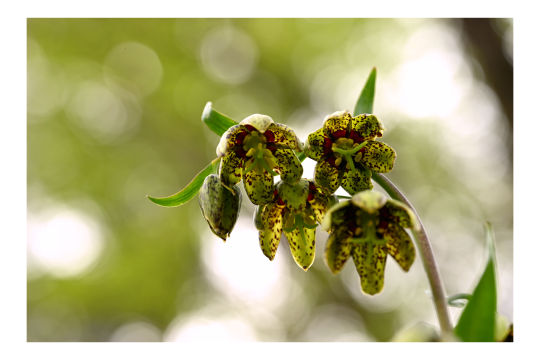
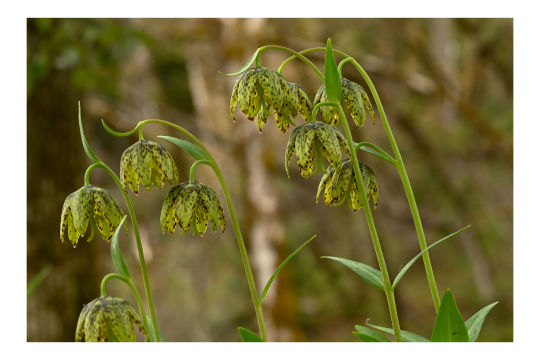

A beautiful patch of Checker Lilies, Fritillaria affinis, in Oregon White Oak (Quercus garryana) / Black Oak (Quercus kelloggi) woodland, above the Trinity River.
Six Rivers National Forest, California
#Fritillaria#Checker Lily#Lillium#forest floor#Oak Woodland#Trinity River#six rivers national forest#spring#botany#public lands#Klamath Mountains#Northern California#beautiful nature#naturecore#flower photography#macrophotography#botany photography#nature photography#original photographers#nikon photography#nikon#105mm#photographers on tumblr
40 notes
·
View notes
Text
Hiiiii I’ve seen some perfume posts going around and I’ve decided to make one for the old ghouls
Everything is purely based on vibes and what I think fits them best! Era 1- 3 ghouls (:
Alpha:
Smells of something smoky, mechanical. As bright as a factory fire.
- https://www.sirensongelixirs.com/products/archangel-mass-effect-garrus-inspired-perfume-blue-steel-icy-musk-leather-black-pepper-coal-gunpowder-sandalwood-vegan-indie
Blue steel, icy musk, kiss of leather, black pepper, dry coal & hint of gunpowder, citrus, & soft woods.
-https://six-scents.com/products/ierofante
Suede, Gasoline Accord, Nutmeg, Styrax Pyrogene, Smoky Leather, Golden Amber, Cashmeran, Vetiver
Omega:
Like a hug from an old familiar book, something intellectual and dusty
-https://us.akrofragrances.com/products/ink
Vetiver, Black Ink, Jasmine, Birch
- https://nuicobaltdesigns.com/products/bibliophilia?variant=31891723386957
The vanillic scent of aging paper, the tang of fresh ink, venerable bookshelves of oak and mahogany, a sweet trace of pipe tobacco, an undercurrent of faded leather. Wear this subtle potion to invoke spirits of arcane knowledge and empower your perceptions.
Water:
Bright crispy and refreshing. Smells of tropical waters and the feeling of meeting your childhood best friend on a beach
- https://www.smallflower.com/products/outremer-oceane-eau-de-toilette-1_7-fl-oz?variant=37056704610455
Let the scent of ocean mist transport you to the Southern coast of France, where the bright, fresh Mediterranean sea fragrances the air. Oceane is a mix of marine notes that conjures the salty, sultry allure of the beach.
-https://www.sephora.com/product/skylar-salt-air-eau-de-parfum-P456975?skuId=2468445&icid2=seop_2_title
Salt Air is the fragrance of a perfect seascape with notes of sea salt to give you a fresh-out-the-water feeling. Grounding driftwood and green seaweed mingle with light floral notes of water lily for a perfume that smells of endless summers and breezy, beachy days.
Earth:
Like a dark soil. A deep ancient being buried beneath the ground. Ominous greenery
- https://www.poesieperfume.com/featured-collection-ss/enchanted-forest
Notes: ancient hinoki trees shading moss covered stones, playful forest spirits, bone musk, a hint of gunpowder
-https://fantomeperfume.com/products/ruslan
Black spruce, smoky opopanax, oud, fresh cedar, hinoki, dry fir needles, oakmoss, frankincense, black tea.
Air:
Like a breath of fresh air. Air smells like the first deep breath in a national park
- https://www.victorinox.com/global/en/Products/Fragrances/For-Her/Morning-Dew/p/V0000897
Swiss made revitalizing scent interweaving a sheer citrus blend of lemon, bergamot and mandarin with white violet and airy musk.
-https://altraprofuture.com/products/ghost-flower
A maximalist gathering of smokey woods, rich resins and a singular White Lily. Notes of unripe tropical fruits surround the full-bodied floral, bringing an unexpected neon brightness. Bohemian at its heart, this evocative floral is enveloped by a veil of incense, leathery saffron and unifying spice.
Delta:
Something dark and horrifying. Like a terrible atrocity has occurred but you can’t place what makes you feel like something’s watching you
- https://sucreabeille.com/products/seems-legit
Rotten river mud, a few drops of blood, a swirl of tobacco smoke, sweet pumpkin pie, candy corn, tears.
- https://eaudespace.com/products/eau-de-space-the-smell-of-space-100ml
Latex, metallic, fire, gunpowder, rum and bitter almonds
Pebble:
Mossy. the smell of sitting on a rock the day after it rains
-https://www.cbihateperfume.com/0069
The smell of pavement on a rainy day
-https://alkemiaperfumes.com/products/gaea-perfume-oil-forest-loam-ferns-decaying-leaves-lichens-wet-stones
Forest loam under warm spring sunshine, new ferns poking up through decaying leaves, maple sap flowing over lichens, mosses and wet stones at the edge of a vernal pool.
Cowbell:
Warm and sterile. Light a brightly lit well lived in hospital room
- https://www.toskovat.com/product/anarchist-a_/
Top notes: credit cards, snow, whiskey
Heart notes: dirty dollars, ink, candle wax
Base notes: green sacra resin, holy water, old confession room, priest’s clothes, plastic bag
White-collared promises that children follow, a better tomorrow. Only if you work for it
for every tomorrow.
And me, waiting in the cold, snow on my face, rye in my pocket, hoping for answers for a different age.
Society remains dying. And we have killed it. How shall we comfort ourselves, the murderers of all murderers?
- https://fzotic.com/products/room-237
a bracing vinyl shower curtain note followed by a supernatural green-floral accord that includes wild fleabane and estragon. In the base: whispering aquatic notes that smell like cool steam haunt a blend of soft woods, opoponax, and costus root.
Mist:
Refreshing and feminine. Crisp ocean air on a cold winter night
-https://forstrangewomen.com/products/siren?variant=31095095361633
Siren opens with a salty overtone of Pacific Ocean air and Jasmine vines filled with tiny white blossoms along the coastal landscape. The blend dives deeper into the water with notes of seaweed, driftwood, and ambergris, finished with a bonfire on the beach.
-https://imaginaryauthors.com/products/every-storm-a-serenade?gad_source=1&gclid=CjwKCAiAzJOtBhALEiwAtwj8tmsMiNIu7KuYJkeTgspW3Noe-Ck6deUEdECrK-ihHLGqGTFPuXcnDRoCChEQAvD_BwE&variant=30276992729165
Danish Spruce, Eucalyptus, Vetiver, Calone, Ambergris, Baltic Sea Mist
Ivy:
Sweet and inviting, like your grandmas garden after she waters it.
-https://margotelena.com/products/poison-ivy-eau-de-parfum
An ode to the powers of nature. Intoxicating notes of sumptuous Bergamot are lavishly laced with blooming florals of Eden Rose and Lily of the Valley, a tangle of Orris Root completes this brush with a dangerous beauty.
- https://www.perfumesclub.us/en/4711/acqua-cologne-blood-orange-basil-eau-de-cologne-spray/p_44880/
Acqua Colonia Blood Orange & Basil combines the aroma of exotic flowering blood oranges with the characteristic essence of basil.
Ifrit:
Warm and sweet. Masculine but comforting, like a hug from someone you love most
- https://www.vixtorm.co.uk/products/lava-cinnamon-b
Balsamic,earth,rich,root,smoke,spice,sweet,warm
- https://www.doctorsweettooth.com/products/cinnamon-bun-perfume-oil-roll-on
Irresistibly sticky and sweet cinnamon buns, the aroma of cinnamon spice and warm flakey pastry dripping with icing wafting through the kitchen
Zephyr:
Spicy, crispy, hurts upon first wiff but is addictive the longer you smell
- https://www.aedes.com/products/menta-y-menta-eau-de-parfum
Moroccan mint, peppermint, mint tea. The name of the perfume menta y menta is repeated like a captivating mantra reminiscent of the movements of the dervishes turning to infinity. menta y menta is definitively a mixted fragrance. Notes: Moroccan mint, tea leaves, citrus, jasmine and roasted coffee
-https://www.etsy.com/listing/836191387/solanum-tomato-leaf-wild-mint
Tomato Leaf, Wild Mint, Blackberries
River:
Dark water, an abandoned dock, secrets only a body of water can hold
-https://alkemiaperfumes.com/products/st-louis-cemetery-1-perfume-oil-moss-stone-cement-dirt
A BROODING OF SPANISH MOSS, CRUMBLING STONE, OLD CEMENT, RED CLAY BRICK, AND GRAVEYARD DIRT
-https://nuicobaltdesigns.com/products/queen-s-bath?variant=39376179724365
Its scent portrait balances cool floral notes of lotus, pikake, and tuberose with bracing springwater and moss-covered stone. Wear for bright blessings and to facilitate deep meditation.
Lake:
The inviting sound of waves crashing into the shore on an empty beach
-https://juniperridge.com/collections/perfume-cologne/products/redwood-mist-cologne
Fog Drenched Forest, Fresh Rain, Crisp Coastal Air
- https://www.poesieperfume.com/fragrance/full-moon
fragrant white rice, shiso leaf, bitter yuzu zest, hinoki wood, green tea, lakewater
16 notes
·
View notes
Text








Six Rivers National Forest, California
The back again portion of the trip.
#hiking#nature#landscape#travel#hike#outside#California#Trinity County#Six Rivers National Forest#backpacking#overnight#river
3 notes
·
View notes
Text
The Autumn Palette for the Healer and Seer
On the bounty of the earth in the waning season.

For quite possibly the last year, my spouse and I have driven about six hours North for the fall semester. We will be here, wintering in the city, until the early signs of Alaskan spring begin to show around graduationtime, and then it looks like we will be off to Ireland for a few years, for grad school.
There are many reasons for me to walk with my eyes firmly affixed to the ground: six hours North, much closer to the subarctic, it is already starting to look like autumn, and there is much to look at in the newly soggy soil. The pushki (heracleum maximum) has felt the beating down upon it of rain shower after rain shower, and begun to yellow and die. Fall mushrooms are starting to spring up, and I know that to the Northeast there is the Pass where every mountain is dark with berries right now. I enjoy listening to the earth take a final, heaving sigh, pushing out the very last of the gifts she has for us to gather, before she finally falls asleep, and we must use those riches to make it through her slumber.
Before I moved to Alaska, I harbored quite the secret loathing for autumn. As much as I knew it was objectively beautiful, and I could appreciate that at times, I knew what the reddening of leaves signaled. The Netherlands is a beautiful country, but where it once boasted frigid cold, enough to freeze over major rivers and host ice-skating races from city to city, and beautiful coniferous forest, it is now drab and grey for the most part. Snow and ice are rare occurrences, and often come and go rapidly. The woodlands outside of the national parks have been micromanaged to the point of intense monotony: there's no winter biodiversity to indulge in, no fun fauna to spot. For the most part, the Netherlands in the wintertime is drab, grey, and wet. While I always prided myself on my attempted love for my home region, when my life consisted of a 2.5 hour one-way commute to school, an extremely stressful unpaid internship, and monotonous grey weather, there wasn't much to love. I am not a city-dweller normally, but during the winters I could only find shelter from the landscape screaming 'flee' when I was surrounded by tall and ancient buildings, beauty immovable and immortalized, unaffected by the changing of the seasons. Only now that I have indeed fled, am I learning to love autumn for what it is, for there is much to see, once your eyes open. In my short adult life, spent in Alaska, I have learned much about death and dying, and one of the things I've learned is that a dying breath is not a wasted one. The gods bestowed us with a soul made up of many parts, to make us inspired, wise, and talented beings. One of those many semi-autonomous spirits that make us up is the ǫnd, our breath. But the ǫnd, or andi, is not just breath, literally. The old ones acknowledged the crucial nature of breath in life, and knew that death was the departure of the ǫnd, among others, from our bodies, our lík. Lík means body, but also corpse, depending on context, because the lík is not a person without the ǫnd, the hugr, the hamr, the oth. Andi, or ǫnd, in that way, doesn't just mean breath, but also life, spirit, force. When the earth breathes her dying breath, it is steeped in much symbolism. Her death, temporary and painless, is not for no reason. There is a lesson of rest for perseverance hidden there, and she teaches it to us by giving us a vast array of autumn colors to celebrate before the cold comes.
Last week, in an effort to not become a sedimentary indoor-person as I do my paperwork, I dragged my spouse along to come camping with me. I needed fresh air, my eyes away from a screen for a while. We drove up to one of my favorite places in the world: Hatcher Pass, specifically the side above Fishhook. I have many fond memories there, and many things still to see. We've climbed many of the mountains there and further North, we've made it to mile six of the Mint Glacier trail exactly four times, and never made it any further. There is beauty in everything in that pass. From the magnitude of the mountains and gorges, the deep blue color of the Little Susitna, to the small details like the gold shimmering in the sand of the riverbanks, and the saxifrage (saxifraga oppositifolia) decorating the rock walls in the summertime. Presently, the pass is an orchestra of fall color, and in such a glorious place, it was hard for me to not to revel in the reds and yellows. With blueberry season already over, the crimson of the various streamside berries was my main interest. Red is a very fascinating color in European folklore, and I can't help but give that much thought as I make note of everything bearing fruit next to our campsite: devil's club (oplopanax horridus), highbush cranberry (viburnum edule), lowbush cranberry (vaccinium vitis-idaea), red elder (sambucus racemosa), rowan (sorbus sitchensis). All bright red berries, following the short-lived season of black berries. The idea that the earth would produce so much red, the color of life, blood, celebration and protection, in the last moments before the snow comes, is wonderful to me. That we are bestowed with amanita muscaria right when the veil is thinnest, that we are shown all this life and spirit right before the resting season. What a reminder of the finite nature of it all. This time of cold and struggle will pass.
When we had sufficiently gathered materials and set up our rather luxurious little camp (we recently invested in self-inflating camp mats... life-changing), we waited for nightfall so we could finally start our fire. I'd been waiting for that moment to come, as it was not only quite chilly, but I thought falltide camping was a perfect opportunity to make blót to the gods in thanks for our fruitful summer. In lieu of a real salmon to offer in exchange for our phenomenal salmon run, we had drawn a ton of artsy little salmon on some nice paper instead. A cute offering, and a solid nod to my development as an artist in the last few months. We struggled for about an hour trying to get the fire going, our phenomenal fire-building skills nearly outcompeted by how wet and humid the surroundings were. I proposed just tossing the offering in while keeping the fire alive with our breath, to make sure it'd be burnt. The sausages were not my priority. But, "no, no," said my Dove, clearly determined. "The fire doesn't have a heart yet." And what profound wisdom there is in that single statement. It's true, a fire kept alive with our ǫnd has no life of its own, its smoke contains no ǫnd with which to carry our offering to the gods. It clings desperately to the wood we provided it with, the life we sacrificed to it, and roars briefly when it feels our breath, our spirit, but it cannot come to life and become a spirit of its own until the fire forms a coal bank, becomes completely opaque, and somehow, in the middle of that log cabin fire setup, develops a blindingly bright heart seemingly sustained by nothing. Every fire that roars of its own volition, whether hearth-made or forest-devouring, has a heart and spirit that makes it roar that way. When that empty space between the kindling fills with light, and the fire starts talking in sputters and crackles to be fed, and fed, and fed, and fed, that is when there is spirit, when there is ǫnd with which to bring the blót to the gods. This ancient and elemental spirit is our greatest friend when Ullr mounts the throne of Asgard. When we stack wood in our hearths and by our tents, and plead deliriously at the small flame we've nursed for it, we are begging for that spirit to visit us. To take our offering of wood and torn up newspaper, to hear our voice encouraging it as it tentatively spreads out to the aged logs, and warm our homes so we may make it through the wintertime. Miraculously, as long as we are diligent, it almost always does. It comes when beckoned, and stays until we cease to feed it, like the good guest it is. We are grateful to the fire, and have been for many many years. Creating a living fire is such an ancient success to celebrate, such a human victory, the joy is universal. We understand we have it to thank for our lives many days, as much as it is a cooperative effort between man and flame. We see, if we squint, our home reflected in the fire. Just as it has a heart surrounded by walls of wood, the fire in the hearth is a home's heart. As such, it plays a crucial role in our fall and wintertime endeavours. When the veil is thin, we use fires for divination, and when the weather is frigid, we use it for sacrifice and celebration. When we perpetuate our culture by telling tall tales during the dark hours, we do it gathered around a fire to fuel our imagination. Fire aids us in most of our endeavors, even if we can't see it do so anymore. Fire, as one of the many gifts for us to use during the waning season, is worth using to the fullest.
Something else I never got to experience in Europe is Halloween. There are minor celebrations for it in the west of the Netherlands, where most American culture was imported to, but east in the flatlands, Halloween is merely a passing mention, maybe a movie night with friends. Halloween starts and ends on October 31st, and rapidly makes way for the Saint Martin festivities and then the Saint Nicholas festivities. Halloween proves to be quite the point of light when learning to love Autumn. Of course, I had always had my autumn equinox festivities, and my harvest sacrifices and the alfblót, and I was aware of samhain, but Halloween as a modern cultural phenomenon is truly intoxicating. Or maybe I'm just goth. Seeing reminders everywhere of the thinning veil, and knowing that soon comes the season for communing with elves, for hunkering down for winter, for chopping wood and living life more meditatively, is taking the edge off that monotony and silence I have come to fear so much. Indeed, while what I can perceive with my eyes is not so interesting, what I can see with my second sight is wildly colorful and worth celebrating. We've taken to calling the week leading up to Halloween 'Holy Week' and are crafting a list of activities and movies to entertain ourselves with as Halloween approaches. I'm also working on a lovely Halloween-themed gift for my spouse, which I will not disclose for fear of them reading this, but it will certainly distract from my sense of impending doom. Since the dawn of time, fall and winter are times of love, community, sharing and celebrating. Most Germanic and Scandinavian festivities around this time focus on coming together with loved ones, enjoying the safety of the indoors and the rewards reaped during summer, and toasting to love and togetherness. Being away now from my family, I too can be surrounded by love and safety when it's most cold out.
Beyond food, faeries, fire, family and frith, there is another thing that solidified my faith in myself to feel joy through another winter. Some weeks ago, for the first time in my life, I saw the Northern Lights as I've always wanted to see them. The nightly bifröst visits the Netherlands on occasion, but generally as a red glow shrouded by clouds. My childhood dream had always been to see the teals and greens of them at full power. It happened unexpectedly and unceremoniously. I had just taken off my makeup and gotten ready to wind down for the night, when my spouse's phone rang. Their best friend, telling us that he'd just seen the brightest aurora, right there in the middle of Anchorage. That he'd looked at the forecast and it was crazy, that we needed to go to the mountains this instant. We debated for a moment, but I decided it was worth the odds of failure. We drove all together to the mountain, and we weren't the only ones who'd had that idea. We spent a solid amount of time there, but only saw white wisps, ones that could nearly pass for clouds. The full moon wasn't helping, the car headlights weren't helping. After some time, we drove back down. It wasn't until we walked into a dark alley on campus on the off chance of spotting those tendrils once more that we noticed the aurora picking up. Thankfully my spouse knew a great spot on campus to sprint to, where we could see nearly the entire sky, and sources of artificial light were few. That's where I found out everything I thought I knew about the aurora was a lie. It is truly indescribable. The vibrancy shocked me. The aurora looks very much like ecstasy feels; like the feeling of seeing everything come together, understanding that everything is itself and each other. Witnessing something so divine, so inspired, so incomprehensibly large on a random Saturday in the city... there is nothing better to fill the canvas that is the winter sky, nothing better to serve as a reminder that magic does not die, and all things end. The reds of ecstasy and life, the yellows of perseverance and modesty, the white of death and rebirth, the teal of divine inspiration contrasted against the black of it all will make way for tender greens, for violets, for pinks, for blues, and eventually for reds again. There is nothing to fear in the slumber of winter but my willingness to succumb to misery. There will be joy. There will be auroras to admire. There will be snow to ski on, there will be moose to hunt, there will be fish to lure, there will be ducks to tend to.
The final breath of the planet before she dies to come back to us renewed and plentiful offers me an array of colors to be inspired by. I will look at them with gratitude and love. I will know my home among the reds and browns like I know it among greens and blues. Winter is my time to rest and recuperate, to ponder, to hone my craft, to lie in wait until the first sign of spring comes, for then I can labor again. Until then, I will smell winter on the winds blown over the fresh snowcaps on the mountains, and I will look forward to looking it in the eye and learning from death once more.
3 notes
·
View notes
Note
🌻🌻🌻
three facts for three sunflowers!
the first recorded use of the term “Bigfoot” to refer to the cryptid was in 1958 in Humboldt County, CA. the term was used by loggers to describe an alleged creature leaving large, human-like footprints around the Six Rivers National Forest area (footprints that would later be stated to be hoaxes done by a logger named Ray Wallace, as stated by Ray Wallace’s family)
northern brook lamprey larvae are filter feeders, while the juvenile and adult northern brook lamprey have non-functional digestive tracts, and do not feed after the metamorphosis from larvae to juvenile
the heaviest internal organ of the human body is the liver, which in an adult weighs an average of 3-4 pounds
#pimpa#thank you!#I just recently learned about the northern brook lamprey and I think they’re neat#also. Washington state may have the most recorded Bigfoot sightings#but California came up with the name so who’s the winner here
6 notes
·
View notes